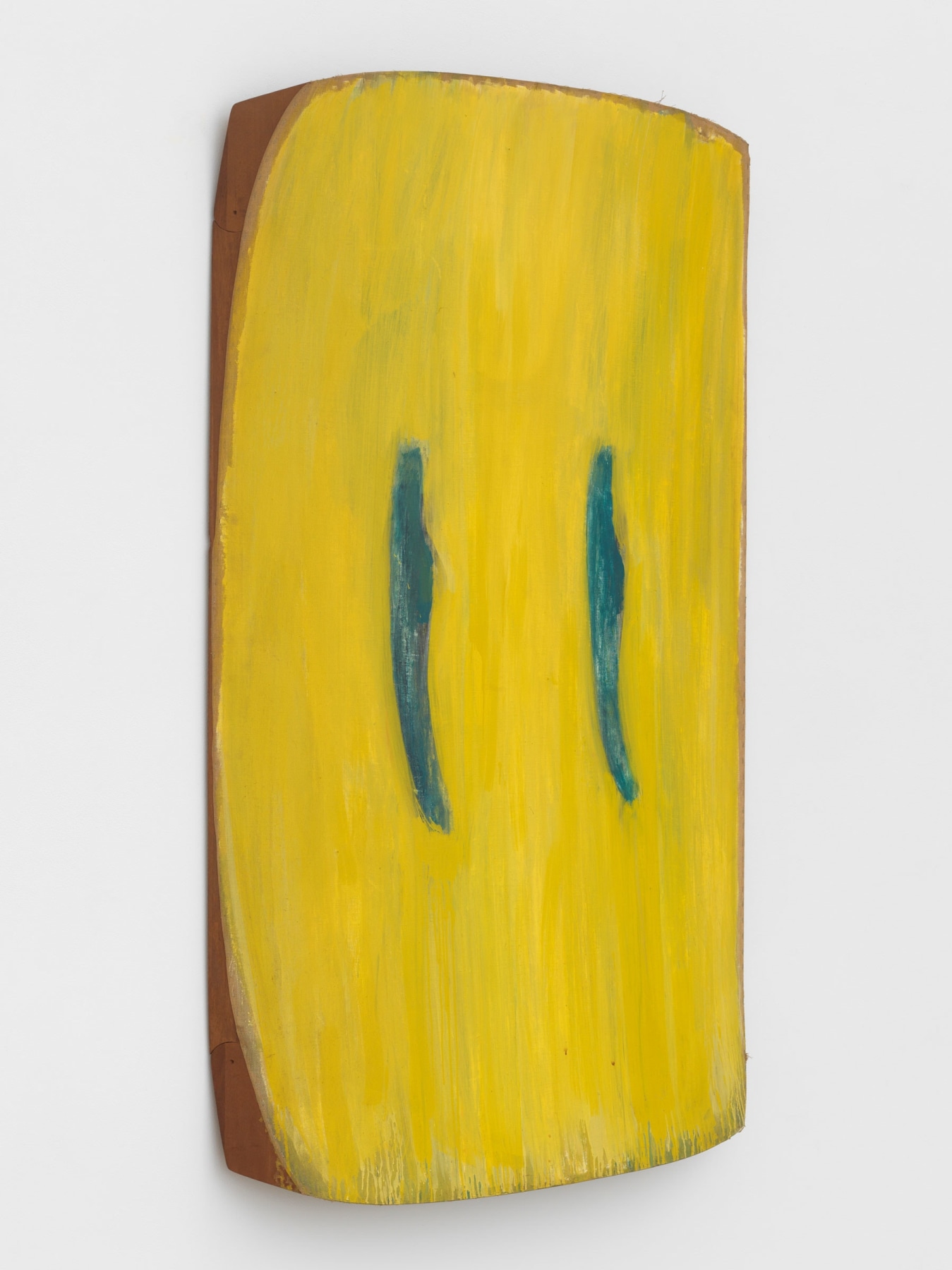“To me there is no past or present in art,” Pablo Picasso famously declared in 1923. “If a work of art cannot live always in the present it must not be considered at all.”1
There is no past or present for Ron Gorchov either, an artist whose work looks in every direction at once. In the late 1960s, his “saddle” and “shield” paintings, with their rough edges and exposed staples, broke away from the elegantly shaped canvases of Frank Stella and Ellsworth Kelly, carving out a creative path both uniquely personal and, over time, broadly influential.
In the same statement, Picasso continued, “The art of the Greeks, of the Egyptians, of the great painters who lived in other times, is not an art of the past; perhaps it is more alive today than it ever was.”2 Two years after his death at the age of 90, Gorchov feels as alive as ever, living through the work of those who knew him or have been touched by his art in a profound way.
In the 1970s and ‘80s, the boldness and originality of his work, its willingness to explore new forms and ask new questions, inspired an emerging generation of artists, notably his fellow Chicagoan Elizabeth Murray and the Neo-Expressionist painter Julian Schnabel, whose postmodernist sensibilities viewed painting as an object in space as much as a set of ideas laid down in pigment.
In 2006, the acclaimed exhibition Ron Gorchov: Double Trouble, curated by Alanna Heiss at MoMA PS1 (June 25–November 20, 2006) — helped to introduce his work to yet another new wave, a restless cohort filling the industrial spaces of Williamsburg, Greenpoint, and Bushwick. For these young artists, who were questioning aesthetic conventions as pointedly as Gorchov did, he was a painter’s painter, not only by reputation but also in action, a natural mentor exceedingly generous with his ideas, insights, and experiences.
Like Philip Guston, Lynda Benglis, and Brice Marden, Gorchov was admired for his willingness to upend his own practice in a spirit of relentless self-examination. A painter besotted with jazz and the movies, he combined the improvisational with the meticulously crafted, or, as Benjamin La Rocco put it in The Brook- lyn Rail, “gestural expressiveness with an evenhanded cool (and a shaped canvas), elements associated with different, often opposed movements in 20th-century painting.”3
It’s telling that Gorchov was a close friend of artists as disparate as Mark Rothko and Elizabeth Murray, Ralph Humphrey and Malcolm Morley, John Graham and John Torreano, Ray Smith and Tony Smith — he had little use for ideology and reveled in the attraction of opposites. Through his teaching at Hunter College, a position he held for many years, he imparted a sense of creative risk-taking to successive waves of artists, just as he was inspired as a young painter by the example of Mark Rothko. Though a quarter-century separated them in age, they shared a belief in the transcendent power of paint.
For Robert Storr, who had dubbed Gorchov “old master Ron,” the artist’s shaped canvases could be imagined as “Rothko’s great ‘multiforms’ flexing.”4 A brilliant colorist, Gorchov imbued his paintings with a consum- mate interplay of pigment suffused with Apollonian grace on one hand, or engaged in a climactic struggle on the other. A deep reader in folklore, religion, and psychology, Gorchov has often titled his works after mythic entities, sometimes deliberately misspelling them as a way to draw the viewer deeper into the veiled mysteries of the image.
In a painting like Choir (1983), the horizontal shield is tapered upward, like an ancient bronze vessel, while the surface is transformed into a landscape of clashing shapes and emotional shifts. Quick, ferocious red and yellow brushstrokes are bordered by an icy river of aquamarine, which then shifts to earthy greens and umbers. Read from left to right, fiery turbulence gives way to Edenic calm, or right to left, Edenic calm slides into cataclysm.
But the potential allusions to landscape are undercut by the title, which could refer to a choir or singers, musical instruments, or angels, or to the screened-off section of a cathedral —which is not far-fetched, given Gorchov’s keen interest in architecture. The multiplicity of meanings generated by the simple act of naming an image reflect the expansiveness that Gorchov infused into his own art, and wished for in art as a whole.
It also reflects a comfort level with complexity and contradiction, which is perhaps his greatest gift to his artistic heirs, those who understand abstraction and representation as two sides of the same coin and find sublimity in the everyday — from the wildly divergent polystylism of Chris Martin to the intensely colored fantasy landscapes of Shara Hughes and Patricia Treib — all of them reveries of one sort or another, states of grace bathed in color and light.
Thomas Micchelli
1 Pablo Picasso, “Picasso Speaks: A Statement by the Artist,” The Arts no. 5 (May 1923), 315-26; reprinted as “Statement by Picasso: 1923” in Picasso: Forty Years of His Art, ed. Alfred Barr Jr. (New York: Museum of Modern Art, 1939), 11
2 Picasso, ibid.
3 Benjamin La Rocco, “ArtSeen: Ron Gorchov,” The Brooklyn Rail, November 2008 (https://brooklynrail.org/2008/11/artseen/ron-gorchov_nob_08)
4 Robert Storr, “SLANT: Missing in Action: Robert Storr on Ron Gorchov,” Artforum, September 2005, vol. 44, no. 1, 93-96















